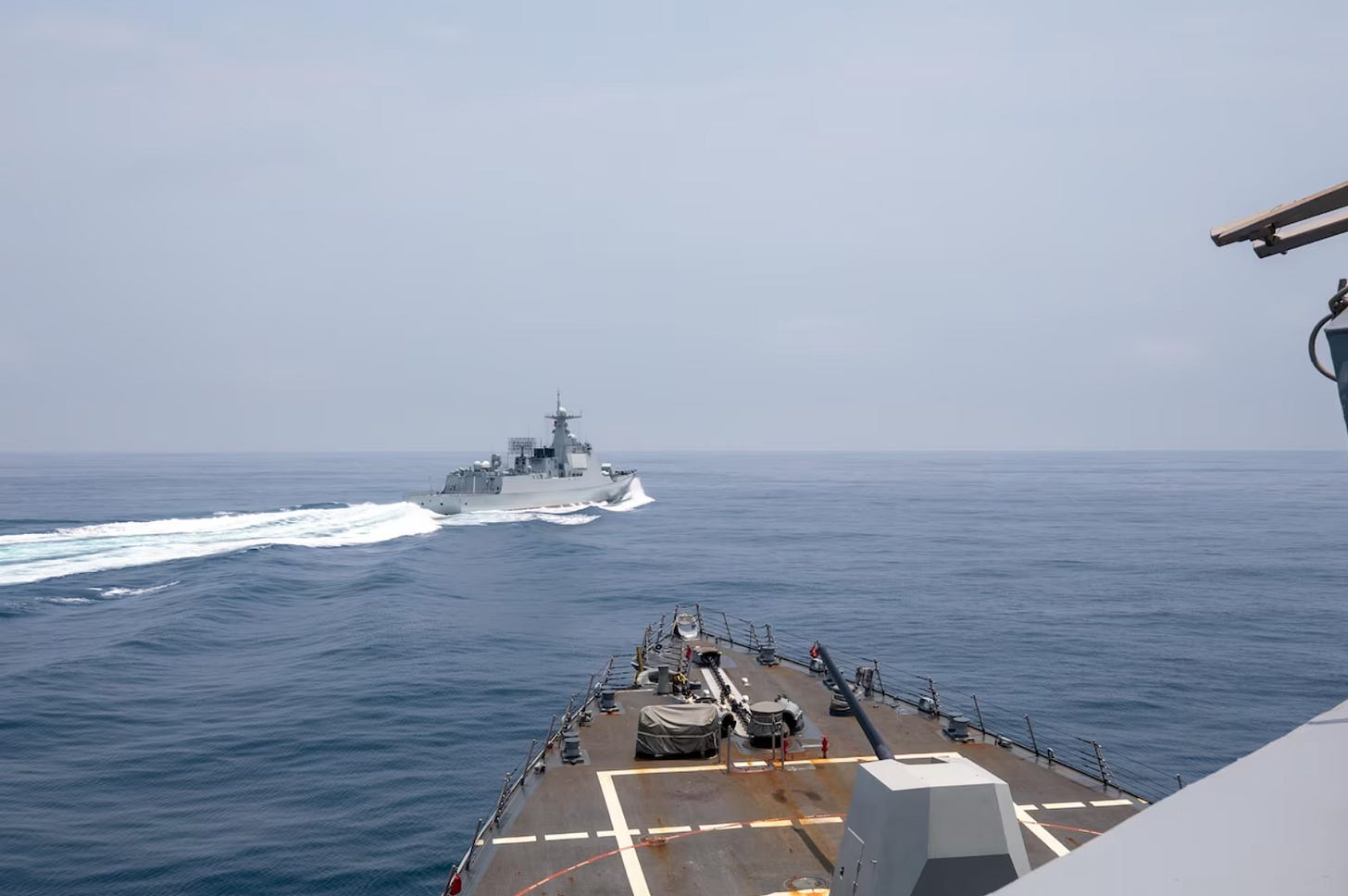US military strategy to deter PLA in Taiwan Strait: an "unmanned hellscape"; American sanctions cut off China's access to key chips; Japan & US plan for joint defense production
Josh Rogin, Washington Post: “The U.S. military plans a ‘Hellscape’ to deter China from attacking Taiwan”
China’s likely strategy is to overwhelm Taiwan with a massive attack with little warning. Xi doesn’t want to repeat Russian President Vladimir Putin’s mistake in Ukraine in 2022, when Russia’s initial full-scale invasion failed and devolved into a long war of attrition.
The key to thwarting Xi’s assumed strategy is a U.S. strategy called “Hellscape,” Adm. Samuel Paparo, the new head of U.S. Indo-Pacific Command, told me in an interview. The idea is that as soon as China’s invasion fleet begins moving across the 100-mile waterway that separates China and Taiwan, the U.S. military would deploy thousands of unmanned submarines, unmanned surface ships and aerial drones to flood the area and give Taiwanese, U.S. and partner forces time to mount a full response.
“I want to turn the Taiwan Strait into an unmanned hellscape using a number of classified capabilities,” Paparo said. “So that I can make their lives utterly miserable for a month, which buys me the time for the rest of everything.”
“I can’t tell you what’s in it,” he replied when pressed about details. “But it’s real and it’s deliverable.”

Yahoo Tech via Tom’s Hardware: “Huawei exec concerned over China’s inability to obtain 3.5nm chips, bemoans lack of advanced chipmaking tools”
A high-ranking Huawei executive has reportedly made a rare admission that China’s ambitious semiconductor efforts may have peaked. On June 9, during the Mobile Computility Network Conference in Suzhou, China, Huawei’s Cloud Services CEO Zhang Ping’an voiced concerns about China’s inability to source 3.5nm chips because of U.S. sanctions.
Zhang pointed out that TSMC, based in Taiwan and therefore not subject to the U.S. sanctions, continues to increase its supply of 3.5nm semiconductors. “However, under U.S. sanctions, China has no way to secure these products,” he said.
Nikkei Asia: “Japan, U.S. form working group for joint missile production”
TOKYO -- Japan and the U.S. concluded a series of meetings aimed at promoting defense industry cooperation in Tokyo on Tuesday in which they agreed to set up working groups on joint missile production, ship and aircraft repair, and supply chain resiliency.
"It is clear that the U.S. military-industrial base cannot meet all the security challenges," U.S. Ambassador to Japan Rahm Emanuel told reporters on Monday. "Japan's engineering, industrial and manufacturing capacity is a major, significant development" for the U.S. defense industry, he said.
…
According to Emanuel, the meeting of the Japan-U.S. Security Consultative Committee, or "two-plus-two," to be held in July is the "deadline" for achieving concrete outcomes in defense industry cooperation. "The measure of success is how many missiles and [how much] co-production that we can set up in a short period of time. ... The goal here is not more meetings," Emanuel said.
The allies will also discuss "co-sustainment of forward-deployed U.S. Navy ships and Air Force aircraft," and "supply chain resiliency for priority defense requirements," according to a statement by the U.S. Defense Department.
If ships and aircraft can be repaired in Japan, the front line of defense in East Asia, they can be returned to operation quickly.
"China has a major capacity [in shipbuilding]. We already know that they will surpass us," Emanuel said, adding, "The U.S. military-industrial effort could use a little impatience as a sense of urgency" amid geopolitical uncertainty, including the ongoing war in Ukraine and conflict in the Middle East.




